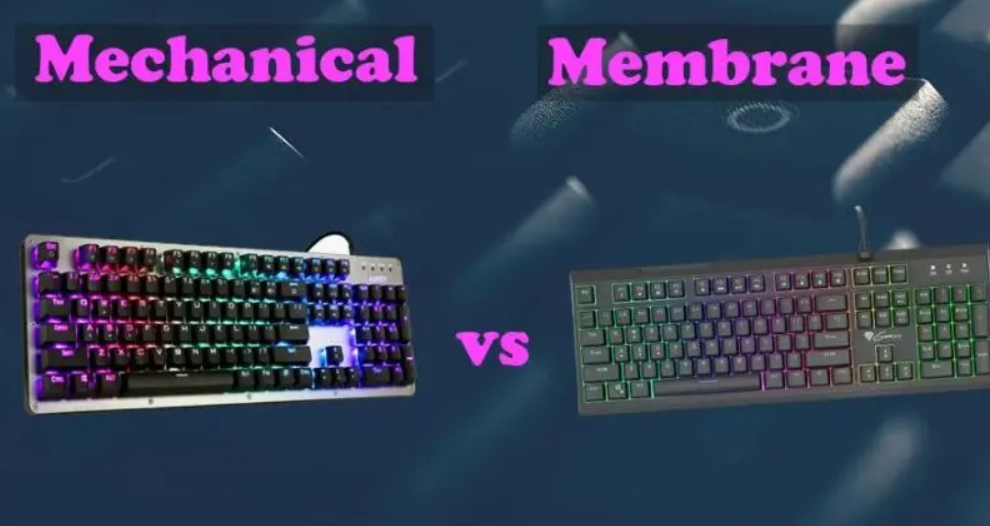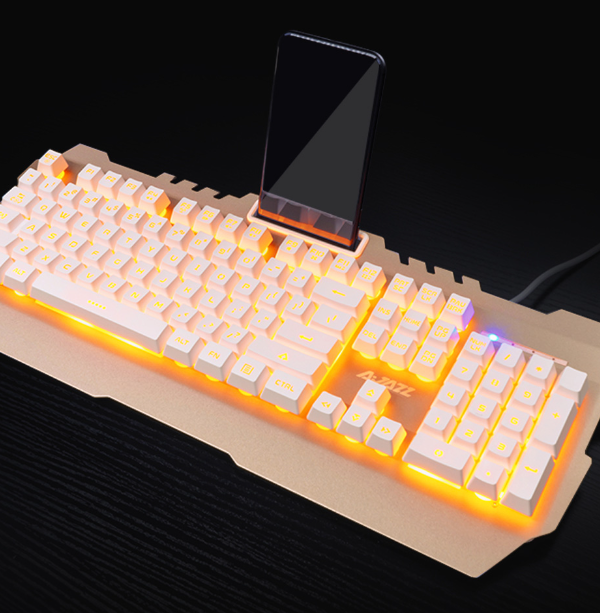A keyboard is a crucial part of many contemporary electronic gadgets. In a word, keyboards enable users to direct or type-operate computers and other devices.

The most often used keyboards are mechanical and membrane keyboards, while there are very few varieties as well. Today, we’ll delve into membrane keyboards, their operation, and the benefits and drawbacks they have over mechanical keyboards.
Table of Contents
Overview of Membrane Keyboards:
Membrane switches are used in membrane keyboard, and stress pads with printed characters, symbols, and numbers serve as the keys. Mechanical keyboards, on the contrary, are constructed from individual keys that have their individual switches. The membrane keyboard may be made more compact and smaller thanks to its structure.
Three layers make up a membrane keyboard: two membrane layers, a neutral middle layer, and conductive traces beneath. The upper membrane layer is pressed down when a button is pressed, coming into touch with the traces and completing the electrical circuit that activates the key.

Membrane keyboard varieties:
Plain key and dome key membrane keyboards are two different varieties. With flat key membrane keyboards, all the keys are printed on a single pressure pad. Dome key membrane keyboards include a rubber dome in the switch design that rests over the membrane levels. Dome key membrane keyboards are created so that the user may feel the keys more directly.

Both dome key and flat key layouts are still categorized as membrane keyboards since they both employ a single pressure pad, even if a dome key membrane keyboard simulates the sensation of a mechanical keyboard. They lack discrete keys with separate switches and instead have a single layer that resembles rubber.
Membrane keyboards’ benefits
Compared to mechanical keyboards, membrane keyboards offer certain significant benefits. For starters, a membrane keyboard’s architecture enables it to be more transportable, smaller, and interoperable with a variety of electrical gadgets.
They are more silent when in use than mechanical keyboards, and because of their straightforward construction, they are also less costly to make and repair.
They are less durable than membrane keyboards. They are more able to withstand spills and grime since they are sealed. They are the preferred option for the majority of office computer settings due to this the reality that they are less costly than mechanical keyboards.
Membrane keyboard also offer the benefit of not having discrete keys with independent moving elements. This indicates that they are stronger and last longer than their mechanical equivalents.

The Problems with Membrane Keyboards:
Membrane keyboard offer several benefits, but they also have drawbacks. Membrane keyboards’ primary drawback is the absence of tactility for the operator.
Users who want their keyboards to be more responsive, like gamers and typists, choose mechanical keyboards since the keys on them bounce back up when they are depressed. Compared to mechanical keyboards, membrane keyboards offer less tactile feedback because of their differing construction.
Membrane keyboards also have the drawback of being challenging to clean as each key is a single pressboard and cannot be removed.
Source: Technews
Also read about: Discord on Xbox One?
